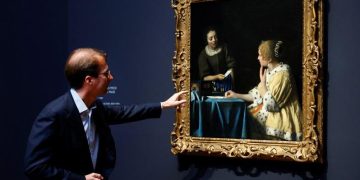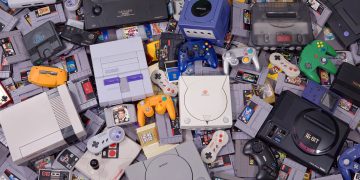The world of auctions is no stranger to surprising outcomes, but sometimes the results defy all expectations, leaving collectors, auctioneers, and casual observers in sheer disbelief. One such jaw-dropping moment occurred when a seemingly ordinary $10 toy was sold for a staggering $1 million. This auction fluke not only baffles market analysts but also sheds light on the psychological and emotional factors that can drive irrational bidding wars. So, how did a toy with no special features or provenance break all known rules of the collectibles market? To understand this phenomenon, we need to look at the intersection of market trends, human psychology, and the unpredictable nature of auctions.
The Toy in Question: A $10 Toy or a Million-Dollar Investment?
At first glance, the item that shocked the auction world seems to be a simple, mass-produced toy—a vintage action figure, perhaps, or a collectible item that could easily be found in any toy store. However, this was no ordinary piece; it had a history, albeit one that was hard to pin down at the time of the sale. The toy was produced in large quantities, but its value had never been properly realized until the moment it was placed on the auction block.
On the surface, the item appeared to be no more valuable than any other piece of nostalgic memorabilia. After all, it had been purchased for just $10 years earlier, and its materials were unremarkable. What made this toy so valuable in the eyes of one particular bidder? Why did the final bid reach an unbelievable $1 million, far beyond anything the toy was ever expected to fetch?
The Auction House Effect: Setting the Stage for a Surprising Outcome
The auction house handling the sale was one of the most renowned in the world. Its reputation for handling rare and valuable collectibles meant that expectations were high, even for items that would otherwise be deemed ordinary. The hype surrounding the event was immense, attracting a large number of collectors and bidders eager to secure rare memorabilia.
Auction houses often create a sense of urgency and excitement around their sales, which can significantly affect the final price of an item. The sense of competition between bidders, combined with the atmosphere of anticipation, can lead to inflated bids—especially when there’s a perceived scarcity or when bidders feel the urge to “win” at any cost. For this toy, the auction house knew exactly how to create an environment conducive to a bidding war, utilizing strategic marketing techniques and showcasing the item as a rare find.
The question remains: Did the auction house intentionally exaggerate the toy’s rarity to drive up the price? Some believe that the auction house subtly promoted the item as having a historical significance, creating an aura of mystery that spurred the high bids.

The Psychology Behind Irrational Bidding Wars
To understand why a seemingly ordinary toy could attract such an absurd price, we need to delve into the psychology of bidding wars. Human behavior is often far less rational than we’d like to believe, and auctions exploit this to great effect.
FOMO (Fear of Missing Out): In the world of rare collectibles, FOMO is a powerful motivator. When a bidder sees others fiercely competing for an item, a psychological pressure builds. Bidders may feel that if they don’t act quickly, they’ll miss out on the opportunity of a lifetime. The fear of losing the toy, even if its value is unclear, can drive individuals to make irrational decisions. In this case, the fear of not owning a once-in-a-lifetime item prompted the winning bidder to push the price to an astronomical figure.
The Need to Win: Auctions are inherently competitive. For many bidders, the act of securing an item is not just about acquiring the object itself—it’s about the thrill of victory. Winning a bidding war, especially for an item as seemingly insignificant as a $10 toy, becomes a point of pride. The desire to be the top bidder can cloud rational judgment, leading to emotional decisions where the value of the item is overshadowed by the need to win.
Social Proof and Herd Mentality: As the price of the toy soared, more and more people began to participate in the bidding. The presence of so many bidders contributed to the perception that the item was worth more than it truly was. Social proof, the tendency for individuals to follow the actions of others, is a potent force in auctions. If others are willing to spend large sums on the toy, potential buyers may feel compelled to do the same, even if they don’t fully understand why it’s valuable.
Anchoring Effect: In this auction, the bidders may have relied on the concept of anchoring, a cognitive bias where individuals base their decisions on the initial price they see. In this case, even though the toy was originally valued at $10, the rapid escalation of the price could have led bidders to anchor their expectations on the growing value, effectively driving them to place higher bids than they would have otherwise.
Market Trends vs. The Outlier
Collectibles markets are often driven by trends, and toys are no exception. In recent years, there has been a surge in the value of vintage action figures, rare limited-edition toys, and other childhood memorabilia. The popularity of toys like Star Wars action figures or Beanie Babies shows just how volatile and unpredictable the market can be. However, even within this environment, a toy selling for $1 million is an outlier.
Many market analysts were left scratching their heads after the auction, questioning whether this sale was indicative of a larger trend or if it was merely a freak occurrence. Collectibles are often subject to market forces, and trends can shift rapidly. While some experts believe that rare toys may continue to appreciate in value, this particular auction result suggests that there may be other, more irrational factors at play.
The Role of Emotional Attachments and Nostalgia
One factor that may have contributed to the absurd auction result is the emotional connection that collectors often feel toward the items they are bidding on. The toy in question likely held a special place in the heart of the bidder who secured it, even if its tangible value didn’t justify the price. Nostalgia plays a significant role in collectibles markets, and for some bidders, the emotional significance of an item outweighs its market value.
In this case, the bidder may have been driven not just by a desire to own a valuable item but by the emotional attachment to the memories associated with the toy. Whether it was a childhood favorite or a symbol of a lost era, the emotional value could have played a significant role in the decision to place such a high bid.
Conclusion: Understanding the Unpredictable Nature of Auctions
The auction of the $10 toy that sold for $1 million serves as a powerful reminder of the unpredictable nature of collectibles markets. While trends and market analysis can provide some insight into what drives prices, human psychology and emotion often play a more significant role in driving bidding wars than logic or market trends. Bidders are influenced by a complex array of psychological factors, including the fear of missing out, the desire to win, and emotional attachment to the item.
Ultimately, the sale of this toy for such a high price was likely a confluence of several factors: a strategic auction environment, the social dynamics of bidding, and the psychological impulses of the bidders involved. While it may seem illogical from a market perspective, the event reveals just how irrational—and yet deeply human—the world of auctions can be.

















































